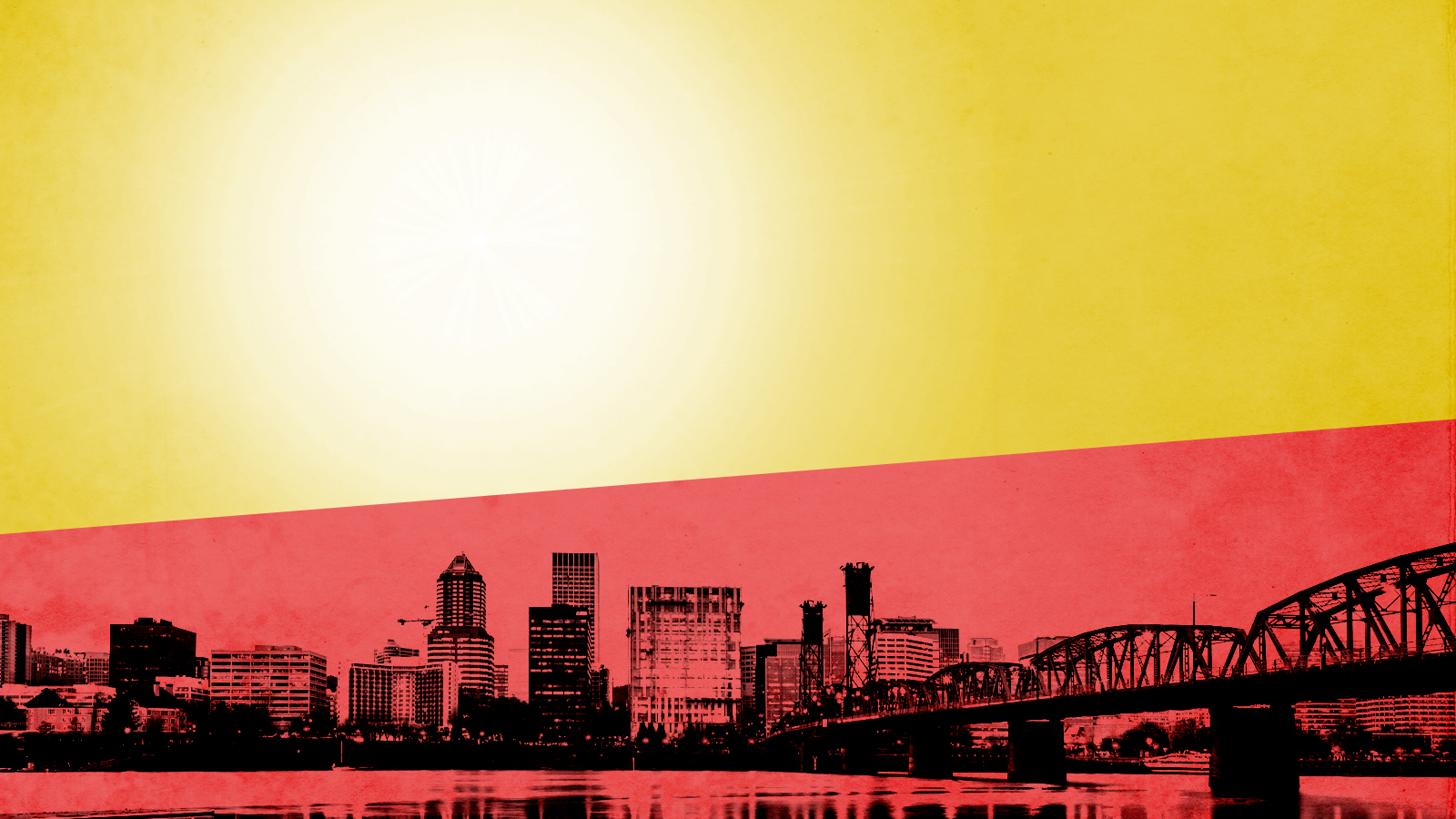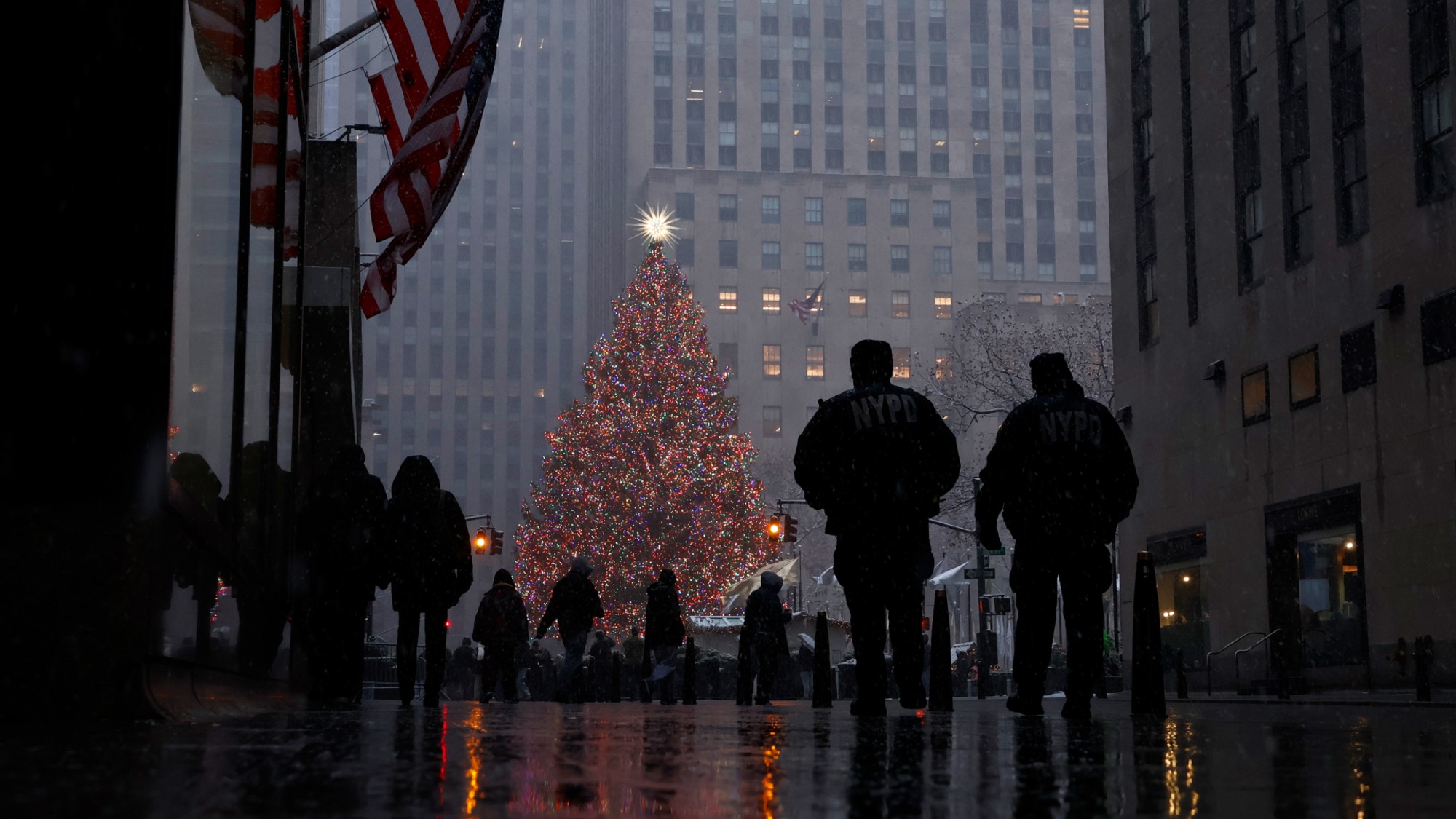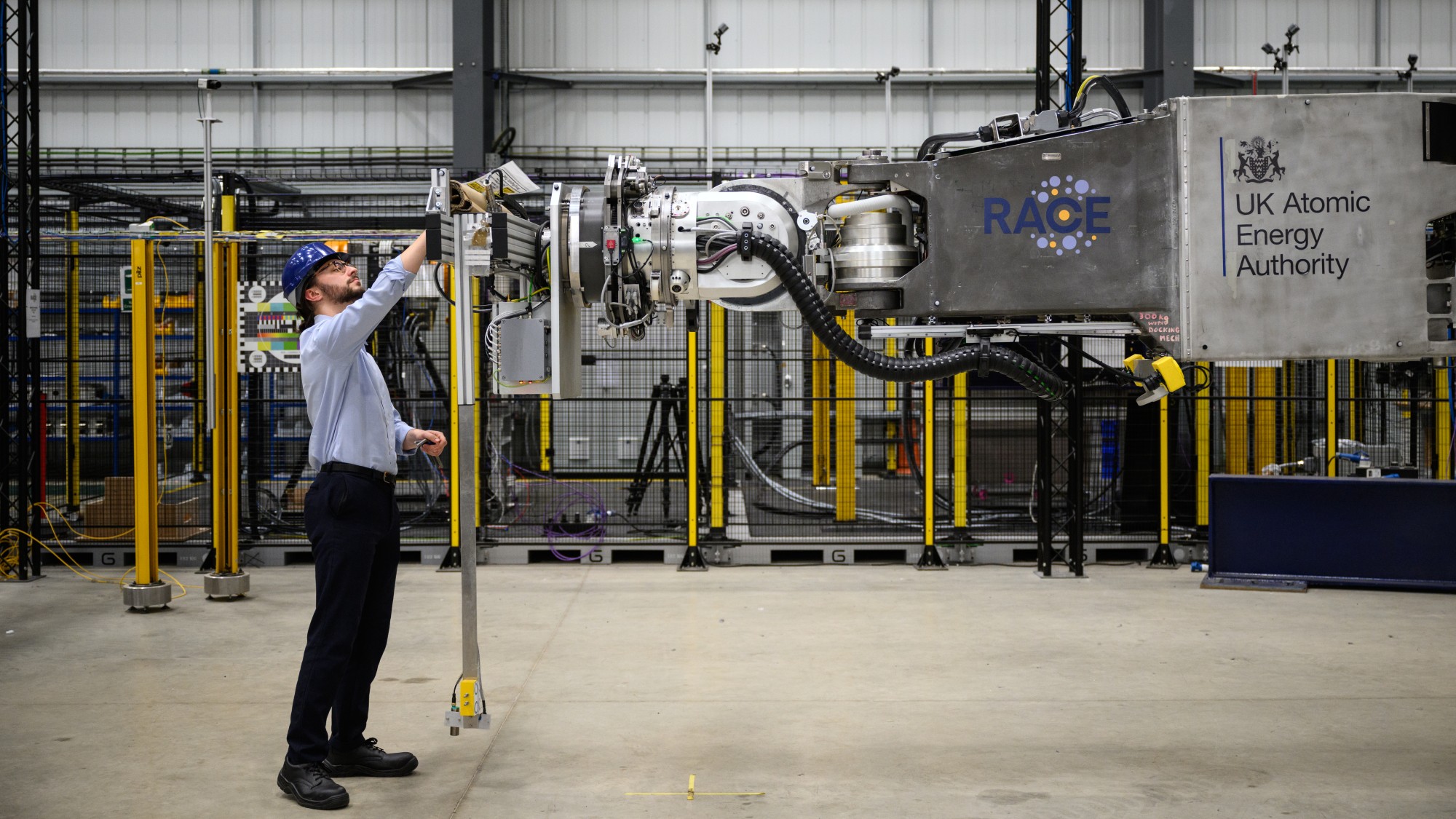How will cities adapt to extreme heat?
Heatwaves are getting worse. Can urban America stay cool?


Heatwaves are becoming more frequent across the world as climate change accelerates, and cities are particularly vulnerable. Here's how architects and city planners are trying to adapt to the new reality.
Why does heat make cities so dangerous?
Materials like asphalt, steel, glass, and concrete absorb and retain heat throughout the day, turning dense urban areas into so-called "heat islands." Portland, Oregon, is considered a prime example in the typically temperate Pacific Northwest, which is recovering from June's record-breaking heatwave. Data from the last decade suggests Portland is 4.8 degrees Fahrenheit hotter on average than surrounding rural areas, but the difference can reach as high as 19 degrees. Heat isn't distributed evenly within cities, either. The neighborhoods that often experience the worst of this discrepancy are formerly redlined areas, meaning they were once subjected to discriminatory, race-based housing practices in the early 20th century. In Portland, formerly redlined neighborhoods can be up to 13 degrees hotter than non-redlined neighborhoods. As climate change makes extreme temperatures more common, cities must find creative ways of keeping residents cool during heatwaves. While long-term solutions like reducing homelessness are paramount to protecting the populations most vulnerable, there are also quite a few short-term fixes.
The Week
Escape your echo chamber. Get the facts behind the news, plus analysis from multiple perspectives.

Sign up for The Week's Free Newsletters
From our morning news briefing to a weekly Good News Newsletter, get the best of The Week delivered directly to your inbox.
From our morning news briefing to a weekly Good News Newsletter, get the best of The Week delivered directly to your inbox.
Like what?
Coming off the heatwave, the Vancouver City Planning Commission sent a memo to the Canadian city's mayor and city council outlining a strategy to plant more shade-giving trees, build more parks in urban areas, install drinking fountains outside of all public buildings, and add water misting stations and cooling tents throughout the city. The commission also called for keeping all public parks, beaches, pools, and public washrooms open 24 hours a day during periods of extreme heat, and making wellness phone calls, to ensure people who could be affected most severely by the heat are safe.
What about old infrastructure?
Much of our infrastructure is not built to withstand extreme heat and will need to be replaced or refurbished to keep cities functioning. For example, during Portland's recent heatwave, when temperatures reached 116 degrees, tar melted and roads buckled, cables sagged on the light rail system, and vinyl siding on homes warped. But overhauling America's infrastructure will be expensive and time consuming. In the United States, both Democrats and Republicans are seeking to pass a new infrastructure bill, but it remains to be seen if or how thoroughly heat-specific issues will be addressed in any forthcoming proposal. In the mean time, urban planners suggest applying lighter coating on roads and rooftops to reflect more heat away from cities and adding rooftop gardens to increase urban vegetation, which can help lower air temperature through a process known as evapotranspiration.
A free daily email with the biggest news stories of the day – and the best features from TheWeek.com
What about architectural changes?
As for individual homes and buildings, architects have been working on designs that keep indoor temperatures steady even when it's very hot or cold outside. One strategy, known as passive design, seeks to "transfer energy from a building to various natural heat sinks, using heat flow paths that do not exist in conventional buildings," architect Pablo La Roche writes. Solutions include triple-paned windows, high ceilings, energy-efficient heat pumps, and highly insulated wall systems, Fast Company reports.
Are these design techniques new?
Historically, different cultures have adapted to their environments with innovative designs. Take Abu Dhabi's Al Bahr Towers, which utilize an adaptable facade related to the centuries-old mashribaya, traditional wooden screens with geometric patterns that "filtered light and views while protecting inhabitants from the intensity of the sun" throughout the Islamic world, The Guardian writes. The modern version employs "1,049 hexagon-shaped shades, opening and closing them like flowers" while following the sun's movement, which provides shade for parts of the building in direct sunlight but doesn't compromise natural light. An example of heat resilient urban planning from the more recent past can be found in Tel Aviv. Back in 1925, 23 years before the founding of Israel, Scottish urban planner Patrick Geddes consulted the Zionist Commission on how to minimize the effects of desert heat. He suggested its roads be built on a grid that channeled the sea breeze from the Mediterranean, a design that still cools the city today.
Can't we just install more AC units?
Yes and no. Air conditioning is a major source of energy usage, so while it can keep you cool on sweltering summer days, it contributes to a nasty cycle of climate change. That doesn't mean it should be scrapped entirely. The Vancouver Planning Commission wants energy efficient air conditioning to become a housing standard, much like toilets, bathtubs, and heat, because it keeps people safe, especially in places like the Pacific Northwest, where the architecture isn't built to combat extreme heat. In cases where air conditioning is necessary, Ladd Keith, a professor at the University of Arizona, recommends setting the thermostat at no lower than 78 degrees to help relieve stress on the electric grid. If homes and buildings do trend toward passive design, Ben Caine, an architect in Perth, Australia, told Fast Company that the ultimate goal should be to use AC units less frequently. But we'll need them as a backup plan while we wait for more sustainable design changes to be implemented.
How long will that take?
It will probably be years before effective measures take hold. Even changes that seem relatively simple can be difficult and expensive to execute. For example, creating "urban forests" that cover 10 or 20 percent of a city would require planting millions of trees, at a cost of up to $65 per tree per year. Those millions of trees have to be planted in such a way that they don't interfere with existing infrastructure. Plus, they take years to grow tall enough to provide a helpful amount of shade. Measures like repaving roads with lighter coating can cost anywhere between 10 cents to $10 per square foot. But experts say the upfront costs of these changes will be well worth the investment down the line. When it comes to passive design, Cain, the Perth architect, says there are logistical issues: "The supply chains and distribution channels for a lot of these materials just doesn't exist yet."
Tim is a staff writer at The Week and has contributed to Bedford and Bowery and The New York Transatlantic. He is a graduate of Occidental College and NYU's journalism school. Tim enjoys writing about baseball, Europe, and extinct megafauna. He lives in New York City.
-
 How climate change is affecting Christmas traditions
How climate change is affecting Christmas traditionsThe Explainer There may be a slim chance of future white Christmases
-
 The MAGA civil war takes center stage at the Turning Point USA conference
The MAGA civil war takes center stage at the Turning Point USA conferenceIN THE SPOTLIGHT ‘Americafest 2025’ was a who’s who of right-wing heavyweights eager to settle scores and lay claim to the future of MAGA
-
 The 8 best drama movies of 2025
The 8 best drama movies of 2025the week recommends Nuclear war, dictatorship and the summer of 2020 highlight the most important and memorable films of 2025
-
 How climate change is affecting Christmas traditions
How climate change is affecting Christmas traditionsThe Explainer There may be a slim chance of future white Christmases
-
 Why scientists are attempting nuclear fusion
Why scientists are attempting nuclear fusionThe Explainer Harnessing the reaction that powers the stars could offer a potentially unlimited source of carbon-free energy, and the race is hotting up
-
 Canyons under the Antarctic have deep impacts
Canyons under the Antarctic have deep impactsUnder the radar Submarine canyons could be affecting the climate more than previously thought
-
 NASA is moving away from tracking climate change
NASA is moving away from tracking climate changeThe Explainer Climate missions could be going dark
-
 What would happen to Earth if humans went extinct?
What would happen to Earth if humans went extinct?The Explainer Human extinction could potentially give rise to new species and climates
-
 Bacteria can turn plastic waste into a painkiller
Bacteria can turn plastic waste into a painkillerUnder the radar The process could be a solution to plastic pollution
-
 Florida has a sinking condo problem
Florida has a sinking condo problemUNDER THE RADAR Scientists are (cautiously) ringing the alarms over dozens of the Sunshine State's high-end high-rises
-
 Diamonds could be a brilliant climate solution
Diamonds could be a brilliant climate solutionUnder the radar A girl and the climate's best friend
